
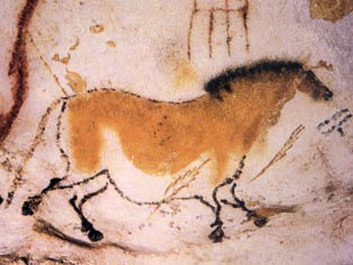
Poetry probably dates back to cavemen and the earliest shamans, who chronicled events in picture-stories. This cave painting in Lascaux, France, is thought to date from between 15000 and 13000 B.C.
Codifying chronicles.
The advent of writing enabled scribes and bards from China, Mesopotamia, Persia, India, and Ancient Egypt to write down odes, Vedas, legends, and myths that had existed in their cultures for thousands of years.
Poetry itself probably dates back to cavemen and the earliest shamans, who chronicled events in picture-stories, symbols, songs, and tales to chronicle hunts and features of the land on which these people survived. Poetry also took nomads into altered or supernatural realms.
As language developed, oral storytellers traveled from place to place in order to recite new legends and tales. Most likely, stanzaic verse began as a series of conscious pauses by oral storytellers during their recitations. Why the pauses? The narrator had to catch his breath and summon the next part of the tale!
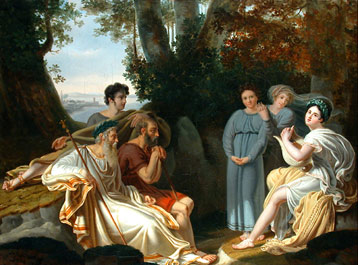
Fertile ground for poetic leaps.
Since then, people have depicted their inner and outer worlds – and the worlds of their peers, legends and civilizations – through hundreds or thousands of poetic forms. Like other types of art and music, the evolution of poetry escalated during fertile creative times and in particularly open societies. So, for example, the poetic lyric leapt forward on the wings of two women – Enheduanna and Sappho - during the height of two great cultures, Sumeria and Ancient Greece, and dramatic verse began with the Ancient Greek playwrights, along with Homer’s epics and Aesop’s fables.
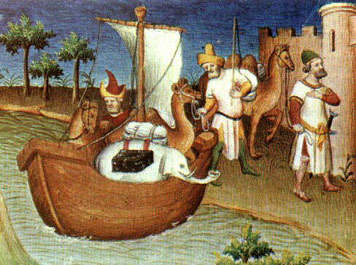
|
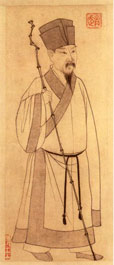
|
|
Marco Polo’s acquisition of scrolls of Chinese poetry (possibly written by Su Shi, the major poet during the Song Dynasty) informed late medieval writers.
|
|
Literary pictures of civilizations.
Poets may have created, modified, or used poetic forms, but centuries later these same forms provide a snapshot of the civilizations from which they emerged. The gorgeous lyrical love poems of Ancient Greece and Rome reflected cultures open to physical and emotional expression. More than three dozen known forms took root in the Greek culture, including the ode, fable, lyric, and Anacreontic verse. So esteemed was poetry that three of the classic nine Muses inspire specific forms of poetry: Calliope (epic poetry), Erato (love poetry), and Polyrhythmia (sacred poetry). In a culture that routinely mixed poetry, music, and the stage, two others are close cousins: Euterpe (music) and Melpomene (tragedy).
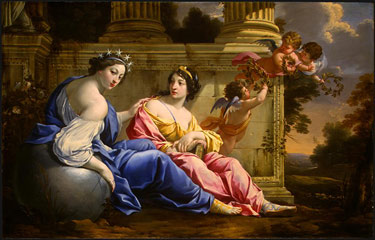
Calliope, the Greek Muse of epic poetry, holds a copy of Homer’s Odyssey. (Simon Vouet, Les Muses Uranie et Calliope, c. 1634)
|
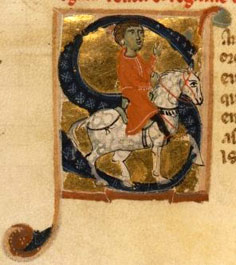
Raimbaut de Vaqueiras (pictured above) was a court poet, but canso stanza, rondeau, and triolet forms of poetry enabled other Provencal troubadours to safely relay information during the Crusades. (BNF Richelieu Manuscrits Francais 854, Bibliotheque Nationale Francaise, Paris)
|
